
by Julie McConnell | Apr 3, 2025
Some years it can be hard to tell that the season has shifted from winter to spring in Northwest Florida, but this year we are seeing ideal temperatures for summer vegetable gardens as we shift into April. Soil temperature is affected by ambient temperature and the last few weeks of warm weather has helped to make the ground more conducive to germination of warm season seeds and support growth of transplants. If you have not started your garden yet, do not despair, you still have time to get things growing!
Below is a short list of ideas for your vegetable garden, and you can find more detailed information in the Florida Vegetable Gardening Guide.
Direct seed (plant seeds directly into the garden instead of transplant) recommendations:
Transplant (grown from seed at home or purchased in the garden center) recommendations:
More helpful resources for Florida vegetable gardeners can be found below:
Growing Vegetables in Containers
Harvesting and Storing Vegetables
Starting from Seed
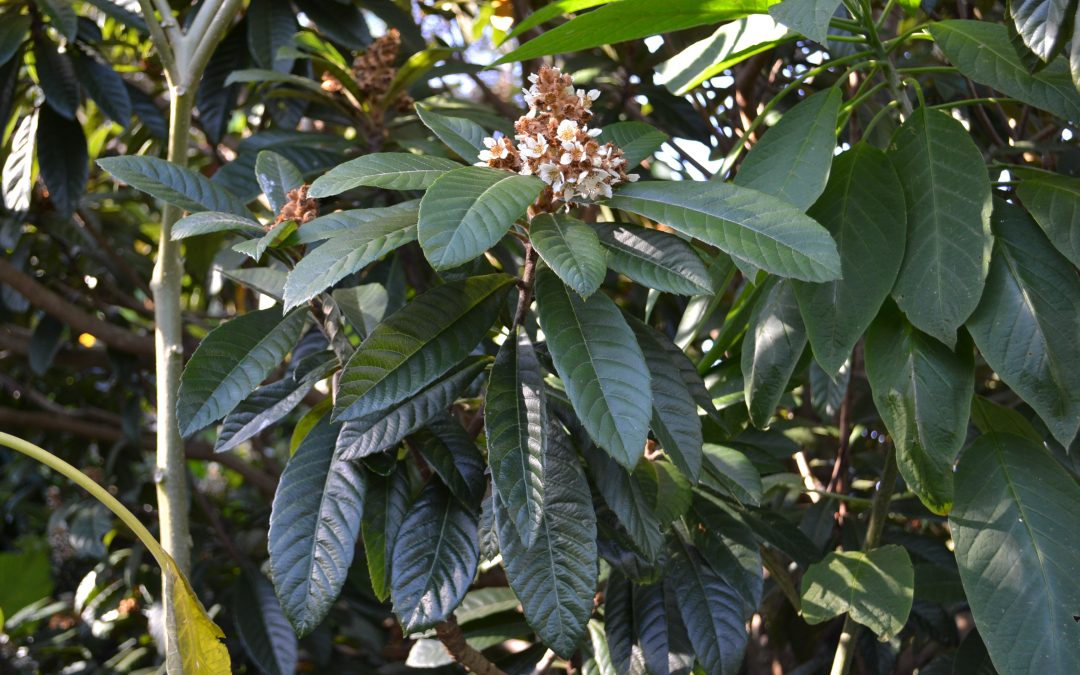
by Beth Bolles | Nov 13, 2024
Although not native to Florida, the Loquat or Japanese plum is adapted to North Florida conditions. Unlike its relatives, apple, peach, and pear, the loquat is an evergreen tree providing a tropical look with attractive dark green leaves.
Flowers appear in Fall and are pollinated by many insects. Orange fruits are ready for harvest in spring if temperatures have not been too cold.
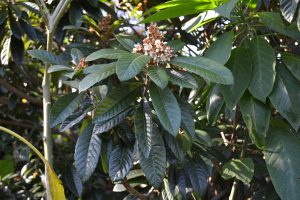
Bees will visit loquat flowers in the fall. Photo by Beth Bolles, UF IFAS Extension Escambia County.
Loquat trees can reach 20 to 25 feet in height with a good spread. Seedling trees will produce fruit but improved flavors are available with different cultivars.
One of the loquats in the Escambia County Demonstration garden was damaged by a hard freeze and succumbed to a secondary bark beetle attack the following spring. The 2nd tree is thriving as a key feature in the tropical garden. The downside to the location of our tree is that is surrounded by informal walkways that can get messy from fruit that falls in the spring. This may be a consideration when you install your own loquat tree.
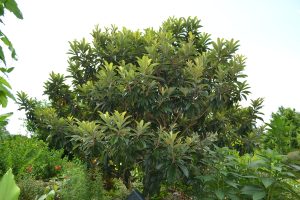
Loquat at Escambia Extension. Photo by Beth Bolles, UF IFAS Extension Escambia County
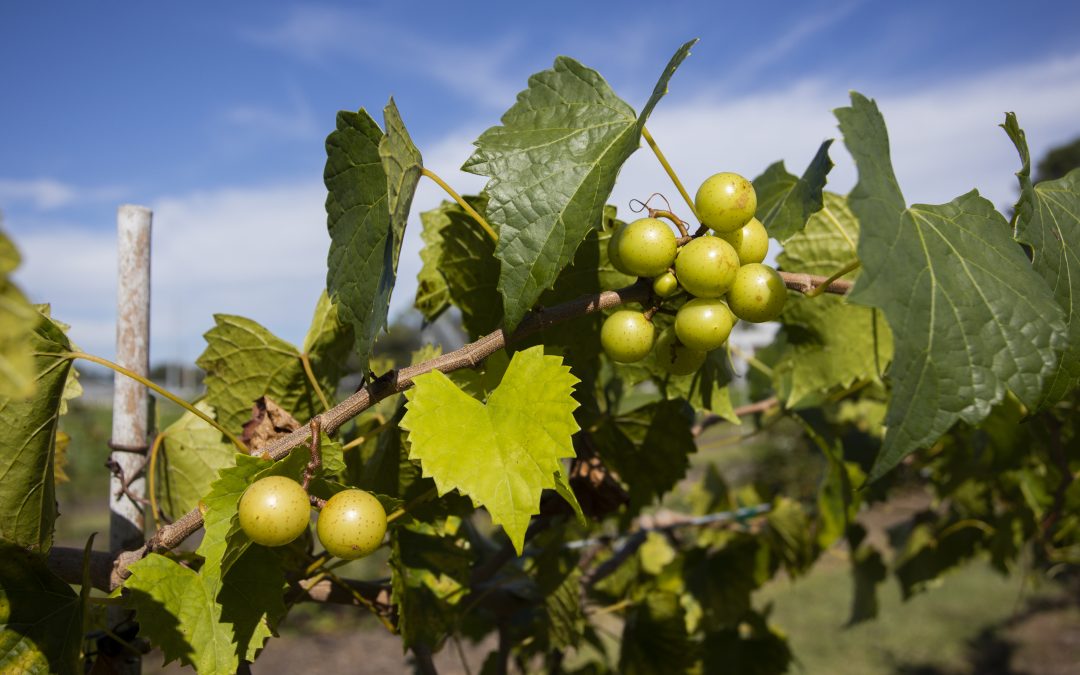
by Danielle S. Williams | Oct 8, 2024
Please join UF/IFAS Extension for the Orchard Crop Diversification Field Day, on Wednesday, October 23rd. This event will be held from 8:30 – 11:30AM Eastern Time, at the UF/IFAS North Florida Research & Education Center (NFREC), located at 155 Research Road, Quincy, Florida.
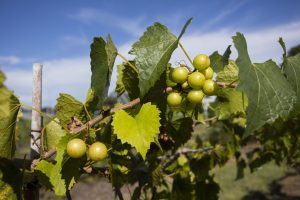
Muscadine grapes growing on a vine. UF/IFAS Photo.
This is a free event aimed at educating commercial farmers, home gardeners, landowners, and industry representatives about some of the potential crop diversification options for North Florida orchards, such as persimmon, blueberry, finger lime, muscadine, pecan, and citrus. Crop diversification is the practice of growing a variety of crops to enhance sustainability, improve soil health, increase biodiversity, and mitigate risks. While there are potential benefits to crop diversification, there are also potential challenges. The field day aims to present attendees with the potential benefits, challenges, and current research associated with the crop options presented.
Attendees will be able to visit the persimmon, pecan, and blackberry plantings at UF/IFAS North Florida Research & Education Center in Quincy. On the tour, attendees will have the opportunity to learn about production practices as well as sample the different persimmon varieties. Light refreshments and lunch will be provided. Space is limited, so please register using the link below or by calling 850-875-7255 to reserve your spot!

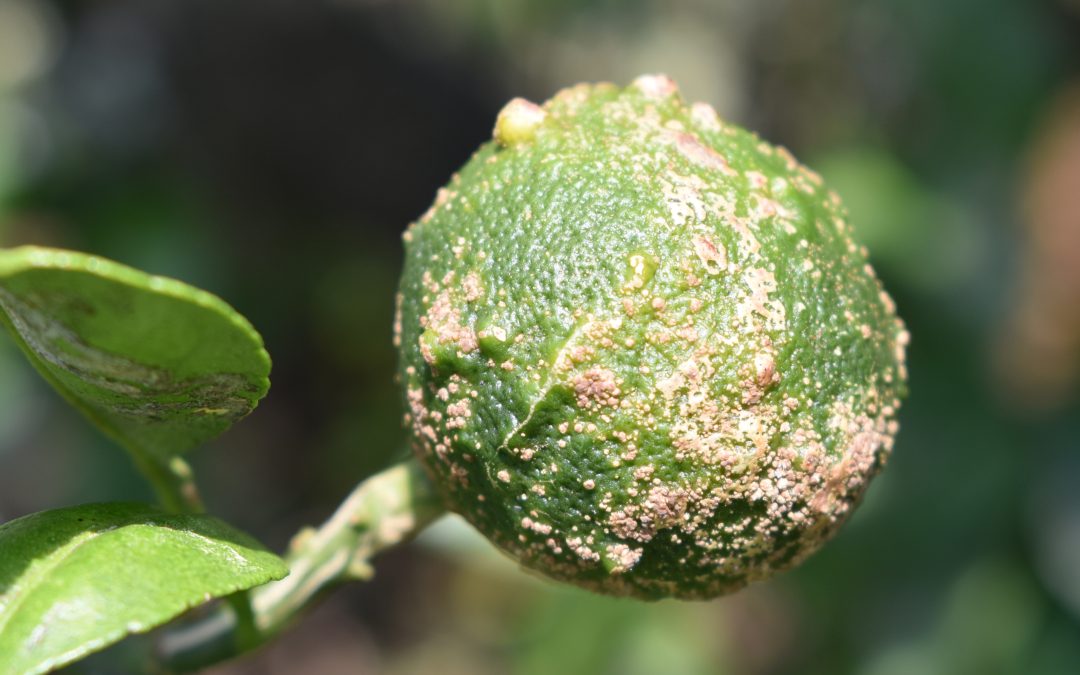
by Danielle S. Williams | Jun 27, 2024
Citrus scab, caused by the fungal pathogen Elsinoë fawcettii, is a common disease affecting citrus trees in the home landscape such as satsuma mandarins, tangelos, grapefruit, and other tangerine hybrids. This disease affects the leaves, fruit, and twigs of citrus trees, creating unattractive, wart-like lesions. While citrus scab is rarely fatal to the tree, it can reduce the quality and marketability of the fruit.
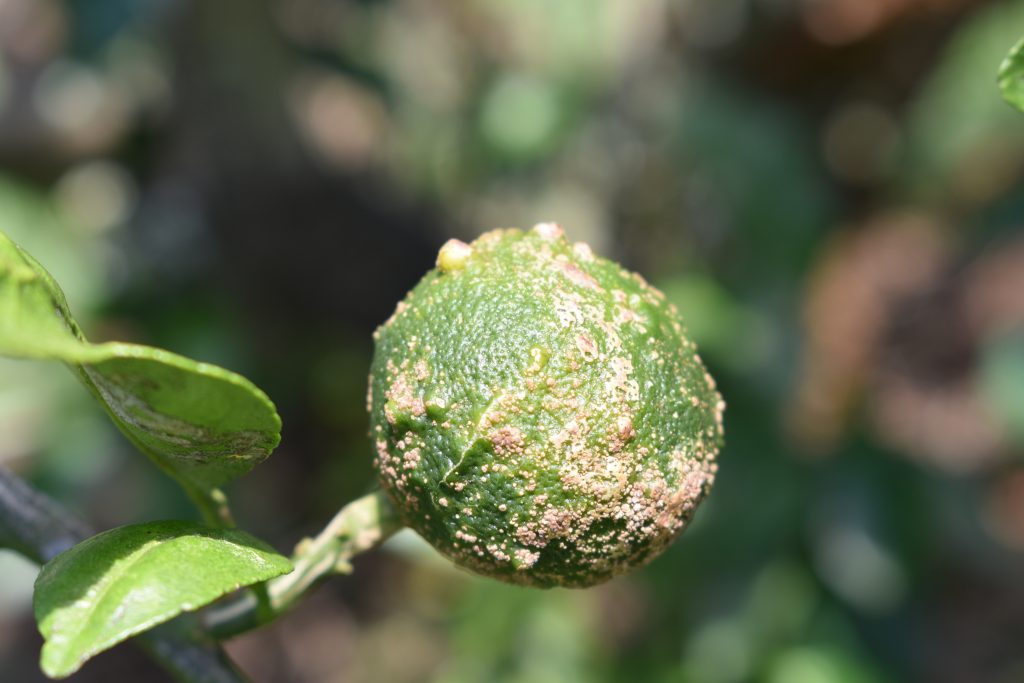
Citrus scab on young satsuma mandarin fruit. Photo Credit: Danielle Williams
Identification and Symptoms
The most noticeable symptom of citrus scab is the development of corky, irregularly shaped lesions on the surfaces of leaves and fruit. These lesions start as small, pale, slightly raised areas that gradually enlarge and turn dark brown to light gray. On leaves, the lesions often appear on the lower surface, giving them a warty appearance. Fruit may exhibit scab lesions, which can cause deformities and discoloration, making them less appealing for consumption, however it does not make the fruit inedible.
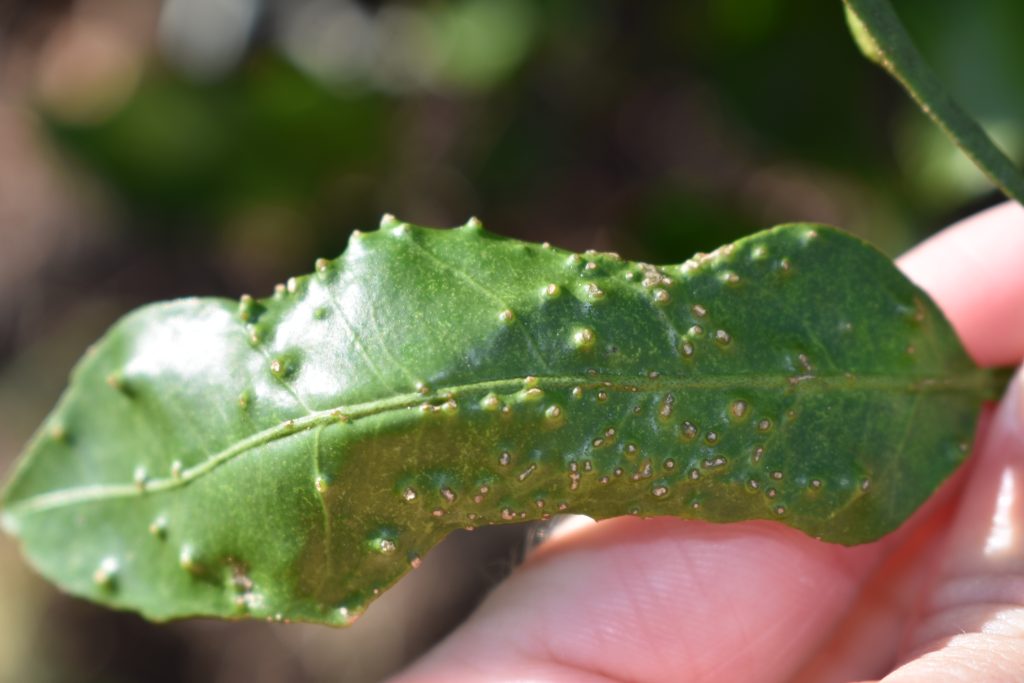
Raised lesions of citrus scab on leaf. Photo Credit: Danielle Williams.
Understanding the Disease Cycle
Citrus scab thrives in warm, moist conditions and is primarily spread through wind-driven rain that carries the fungal spores to new infection sites. The spores can overwinter in infected plant debris and on asymptomatic parts of the tree, leading to new infections during the growing season. Recognizing this cycle can help residents take preventative measures during critical times of the year.
Management and Control
To keep citrus scab at bay, homeowners should employ a combination of cultural practices as well as careful chemical use when necessary.
Cultural Practices
- Sanitation: Regularly remove and dispose of fallen leaves, fruit, and other plant debris to reduce the number of overwintering spores. This practice is particularly important in the fall and early spring.
- Pruning: Prune the tree to improve air circulation within the canopy. This reduces humidity levels around the foliage, making the environment less conducive to fungal growth.
- Irrigation Management: Avoid overhead irrigation. Overhead watering can splash spores onto healthy tissue, spreading the infection. Instead, water trees at the root zone or use microsprinkler irrigation.
Chemical Control:
- Fungicides: Applying fungicides can help protect new growth from infection. Copper-based fungicides are commonly used and can be effective. It is important to read and follow the product label on application timing and directions for use. Typically, fungicides for controlling scab should be applied in early spring when new growth begins.
Conclusion
Regularly inspect your citrus trees for signs of citrus scab, especially after periods of rain and humidity. Early detection and treatment are crucial to prevent widespread infection. Maintaining a healthy tree through proper fertilization, watering, and pest management can also reduce the tree’s susceptibility to diseases like citrus scab.
For more information, please visit:
HS-867/HS132: Citrus Culture in the Home Landscape (ufl.edu)
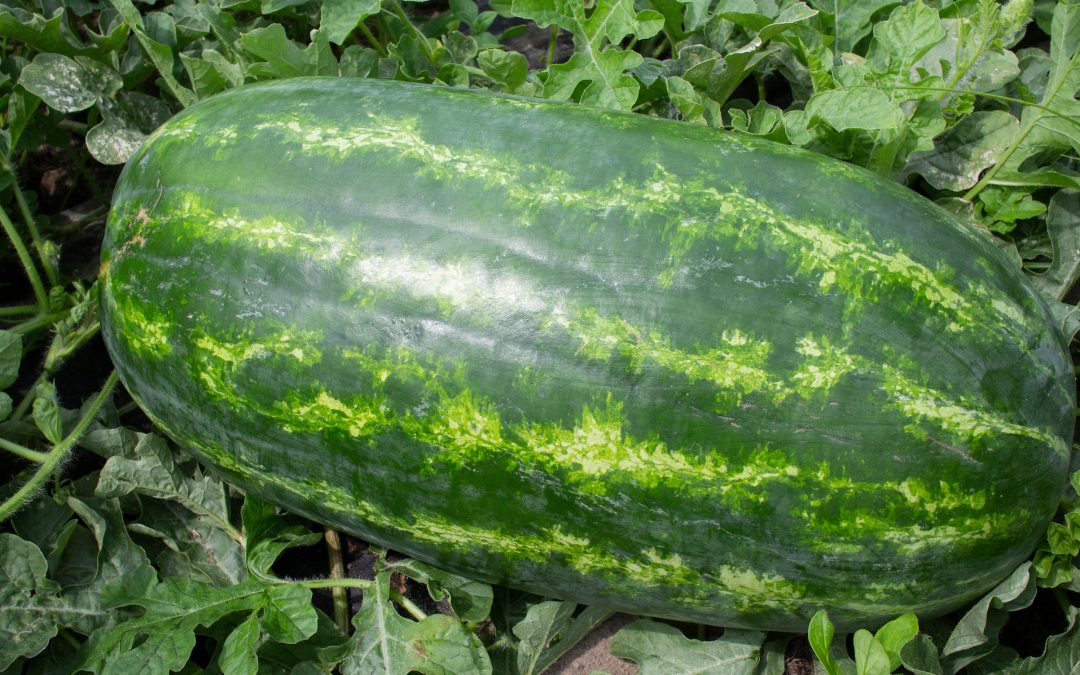
by Julie McConnell | Jun 14, 2024
by Mark Mauldin
Calling all watermelon producers; commercial growers to gardeners. It’s almost time to enter your finest melons in the Big Melon Contest at the Panhandle Watermelon Festival. The festival and the contest have been summer-time staples in the Central Panhandle for decades. Don’t miss your opportunity to showcase the delicious product of your hard work and have a chance to win prize money.
have been summer-time staples in the Central Panhandle for decades. Don’t miss your opportunity to showcase the delicious product of your hard work and have a chance to win prize money.
To make the contest fun for growers of all types of watermelons, contest classes will be broken out by varieties*. The heaviest melon in the class wins. Winners of each class will receive $50, and first runner-up $25. In addition to the classes, there will be a $300 grand prize paid for the overall heaviest melon in the contest, and $250 for the first runner-up.
There is no cost to enter a melon in the contest. However, melons entered in the contest are donated to the festival and will be sold via auction. Proceeds of the auction will go to help off-set the costs of next year’s festival. All contest melons will be on display during the festival and their variety, weight, and grower will be announced during the auction.
The 2024 Panhandle Watermelon Festival will be Friday June 21st and Saturday June 22nd, in Chipley, Florida. The Friday night concert festivities will be held at Jim Trawick Park and Saturday’s events (including the melon auction) will be at the Washington County Ag Center. The auction will begin at 12:00 noon on Saturday.
Melons being entered in the contest will need to be delivered to the Washington County Ag Center prior to the festival. Melons will be received and weighed-in at the Ag Center Wednesday 6/19 between 8:00 AM and 4:00 PM, and Thursday 6/20 between 8:00 AM and 7:00 PM central time. If you have melons that you would like to enter in the contest, but are unable to deliver during the specified times, contact Mark Mauldin prior to 6/19 to make arrangements. Pick-up may be possible, to the extent practical, provided arrangements are made in advance.
The Washington County Ag Center is located at 1424 Jackson Ave. Chipley, FL 32428.
If you have any questions regarding the contest, contact Mark Mauldin at the UF/IFAS Extension, Washington County Office (850-638-6180 or mdm83@ufl.edu).
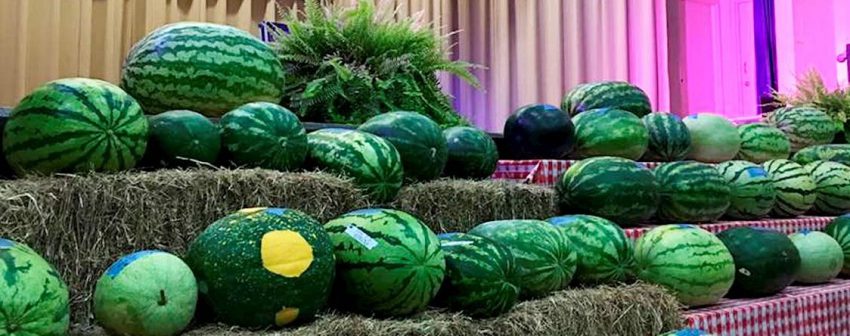
Contest melons on display at the Panhandle Watermelon Festival in Chipley, FL.
*Note: Prizes will be paid for no more than 16 total classes. There must be a minimum of 2 entries of the same variety for the variety to have its own class. If there are more than 15 different varieties with enough entries to constitute a class, the 15 with the most entries will be used (ties will be broken by number of entrants). All melons not in a variety class will be grouped together with one winner and first runner up being selected from the group.












 have been summer-time staples in the Central Panhandle for decades. Don’t miss your opportunity to showcase the delicious product of your hard work and have a chance to win prize money.
have been summer-time staples in the Central Panhandle for decades. Don’t miss your opportunity to showcase the delicious product of your hard work and have a chance to win prize money.